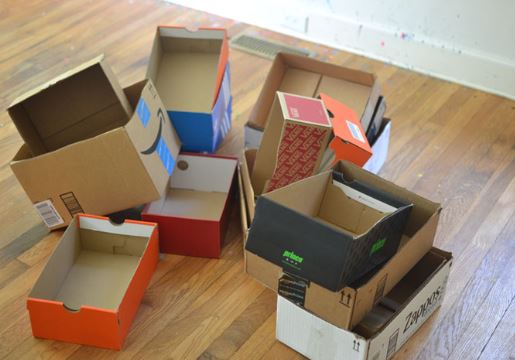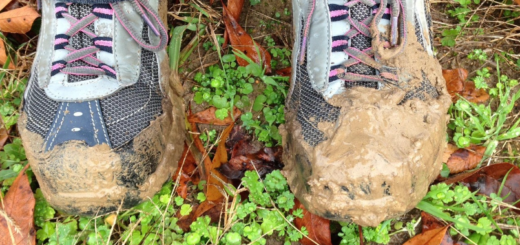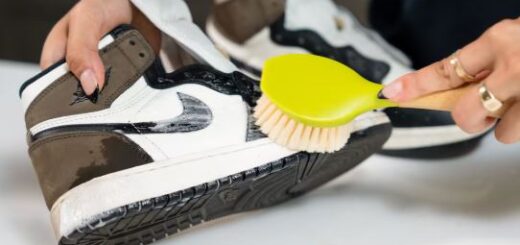Why Cardboard Shoe Boxes Aren’t Ideal for Shoe Storage
If you’re passionate about footwear, preserving your collection is probably a top priority. It’s common to think that storing shoes in their original cardboard boxes is the safest method, but this habit can actually harm your shoes over time. While it may seem like a convenient and cost-effective solution, cardboard shoeboxes come with a range of hidden drawbacks that could affect the longevity and condition of your favorite pairs.
Below are five compelling reasons to reconsider using cardboard boxes for shoe storage and what alternatives may better protect your investment.

Limited Airflow Damages Shoe Materials
Shoes require ventilation to remain in good condition, especially those made from leather, suede, or canvas. Cardboard boxes offer little to no air circulation. When shoes are sealed in an unventilated space, any residual moisture trapped inside—whether from wear, cleaning, or even humidity in the room—has nowhere to escape.
This lack of airflow can lead to the development of mold and mildew, especially in damp environments. Over time, your shoes might develop cracks in the leather, weakened soles, or a musty odor that’s hard to eliminate. Even discoloration and surface blemishes can occur when materials are constantly exposed to stale, moist air. Proper storage allows shoes to breathe and helps preserve their texture, shape, and appearance.
Cardboard Boxes Consume Valuable Storage Space
While shoeboxes might seem like a tidy organizational method at first glance, they quickly become a burden when space is limited. Closets filled with stacked cardboard boxes are not only difficult to navigate but also waste vertical and horizontal space that could be optimized more efficiently.
What often starts as a well-ordered collection can turn into a chaotic pile that’s hard to manage. Retrieving a specific pair requires unstacking multiple boxes, creating frustration and inconvenience. Transparent containers, under-bed storage units, or open shelving are all better alternatives that help you identify and access your shoes more easily without the bulkiness of stacked boxes.

Prolonged Storage Leads to Faster Wear and Tear
Storing shoes in cardboard boxes might seem protective, but over time, it can actually accelerate wear. The environment inside the box can deform the shoe’s structure. Without proper internal support, shoes are likely to collapse or fold in on themselves, leading to permanent creases or cracks in the uppers.
Furthermore, the lack of airflow also impacts internal elements such as cushioning, insoles, or gel inserts. These components deteriorate faster in poorly ventilated and tightly enclosed spaces. Even if the shoes are barely worn, the enclosed environment breaks down materials and reduces their performance and comfort.
Cardboard Doesn’t Keep Out Dust or Moisture
Although you might assume that closed boxes provide a protective barrier against external dirt, that’s not always the case with cardboard. Unlike plastic or sealed storage options, cardboard is porous and easily absorbs moisture from the surrounding environment. This means it does little to guard against water damage or fluctuating humidity levels.
Over time, cardboard boxes can become damp, especially if they’re stored in basements, attics, or other areas with inconsistent climate control. Damp cardboard also attracts insects and can become a breeding ground for mildew, which then transfers to your shoes. Even the common method of wrapping shoes in tissue paper and including silica packets offers minimal protection—acidic dyes in tissue paper can yellow soles or damage delicate materials.
Cardboard Boxes Can Encourage Bacterial Growth
Shoes inevitably collect dirt, bacteria, and allergens during everyday use. If you store them in a cardboard box without cleaning them first, all that grime becomes trapped in a confined space. This fosters a warm, dark, and humid environment—ideal for bacteria, mold, and unpleasant odors to thrive.
Once mold takes hold, it can be very difficult to remove without compromising the shoe’s integrity. Even minor bacterial growth can cause unpleasant smells and may pose health risks, particularly if you have allergies or sensitivities. To maintain cleanliness and hygiene, shoes should be stored in a way that encourages air circulation and allows for easy visual inspection.
Better Ways to Store Shoes Safely
Despite their flaws, the original cardboard boxes can still hold value—especially for collectors or those considering reselling their shoes in the future. In those cases, keeping the original packaging intact (but not in use for daily storage) is a smart choice.
For day-to-day storage, consider more reliable options that extend the life of your footwear. Open racks are one of the most practical solutions. They allow air to circulate freely around each pair, keeping the material dry and in shape. They also make it easier to keep your collection organized and accessible.
Another great option is using clear plastic containers with ventilation holes. These provide visibility, airflow, and moisture resistance—ideal conditions for preserving sneakers, boots, and dress shoes alike. For those with limited space, under-bed shoe organizers or hanging shoe racks can also be useful alternatives that keep your shoes protected without cluttering your living area.

Display Options for Shoe Enthusiasts
If you’re proud of your shoe collection and want to showcase it, consider investing in a stylish display case or modular cubbies. These not only offer excellent protection but also let you turn your collection into a visual feature of your home. Many modern display units are made with UV-resistant panels and ventilation features, so your shoes stay in pristine condition while being admired.
This type of storage solution is particularly popular among collectors of rare or limited-edition sneakers who want to protect their investment while also showing it off. Display units come in various sizes and styles, from minimalist glass cases to industrial-style shelving, making it easy to match your personal aesthetic.
Takeaway
While cardboard shoeboxes might seem like a logical place to store your shoes, they often do more harm than good in the long term. Issues such as poor ventilation, limited durability, susceptibility to moisture, and the risk of bacterial buildup make them an unwise storage choice.
By switching to better storage systems—whether open racks, ventilated plastic containers, or custom display cases—you can ensure that your footwear stays in top condition for years. Not only will you extend the lifespan of your shoes, but you’ll also make your collection more accessible and organized.
Your shoes deserve more than just a cardboard box. Choose smarter storage, and keep every pair looking fresh and ready to wear.








